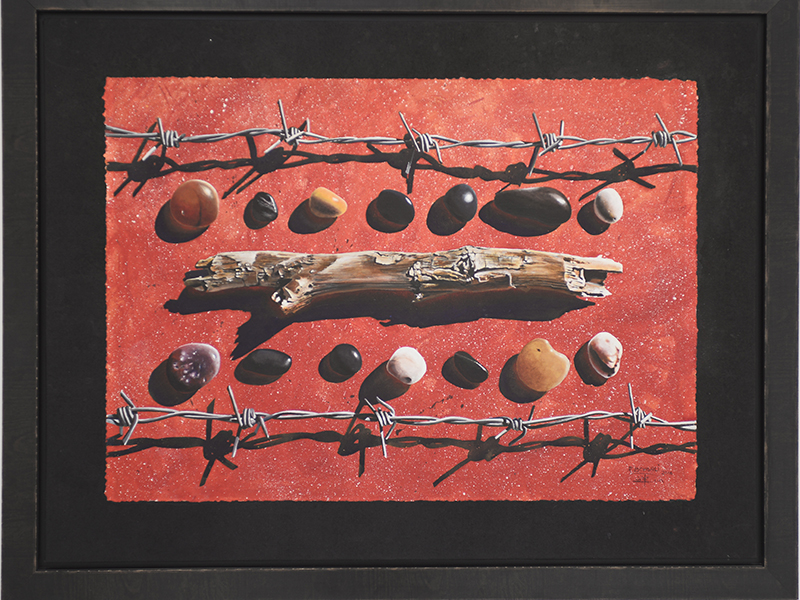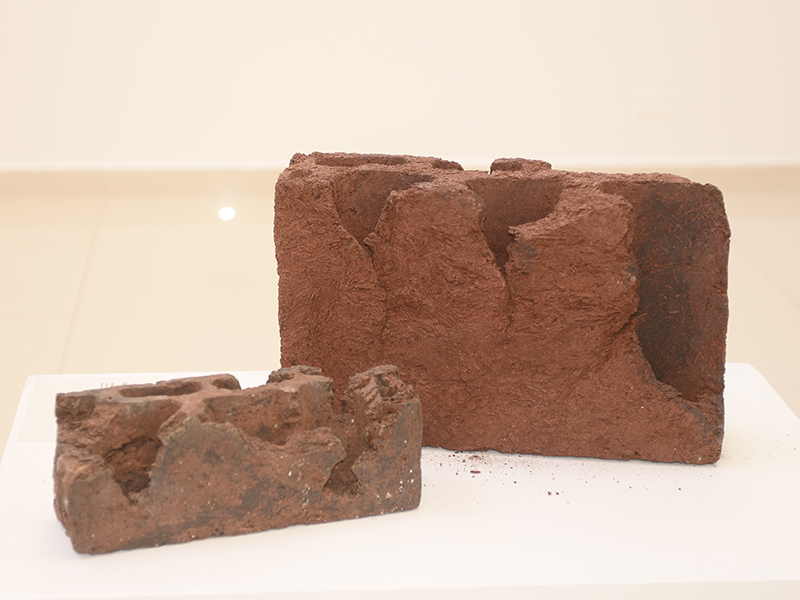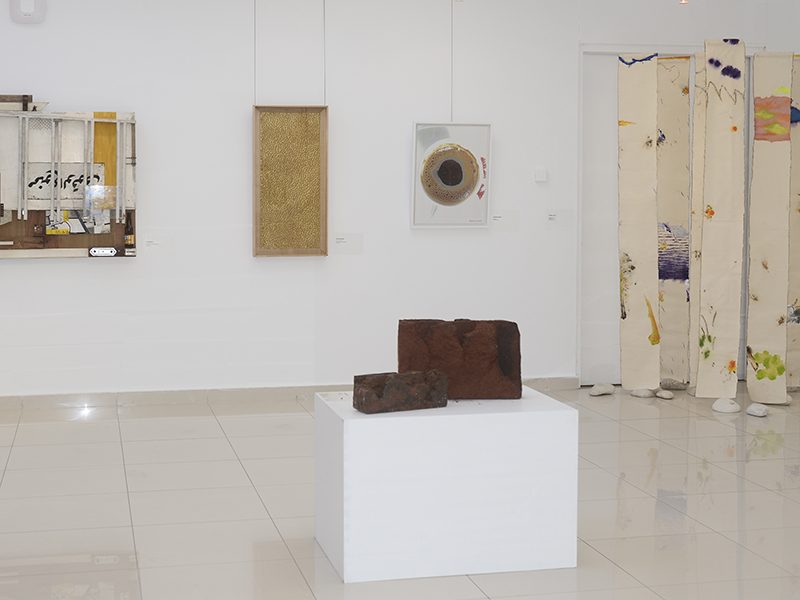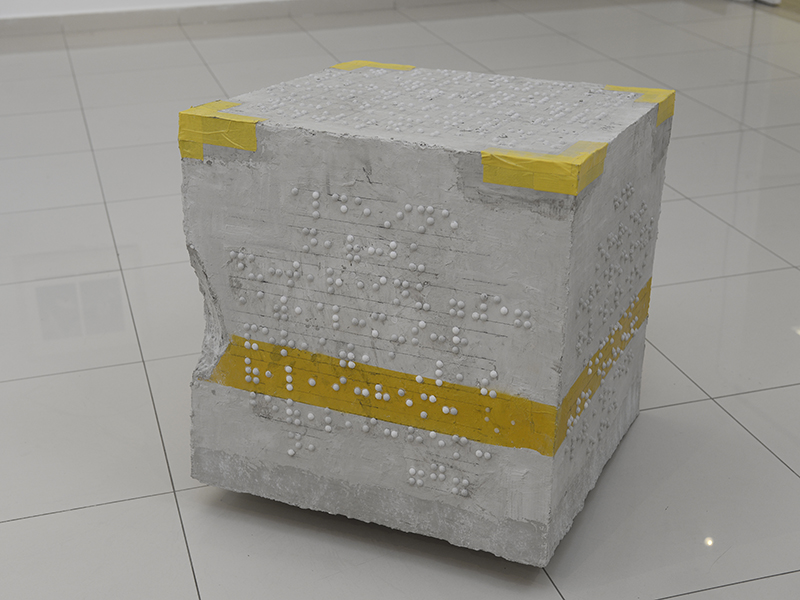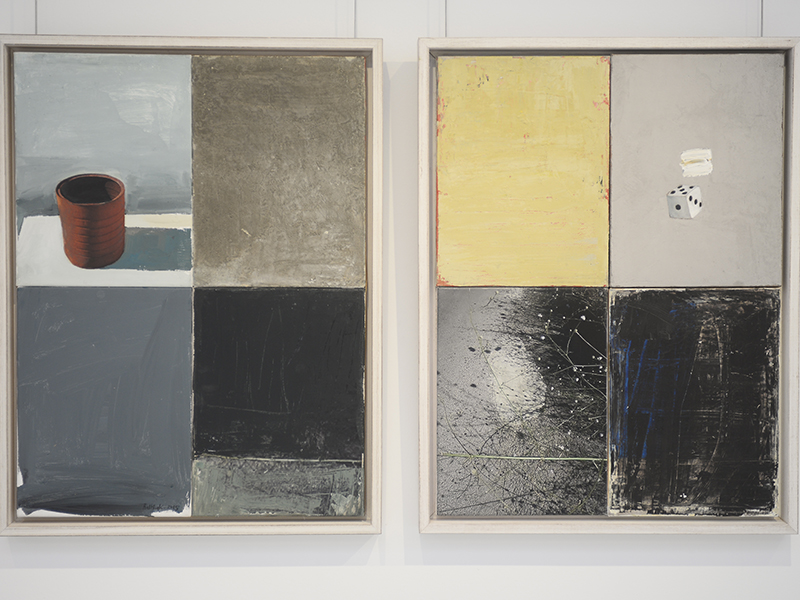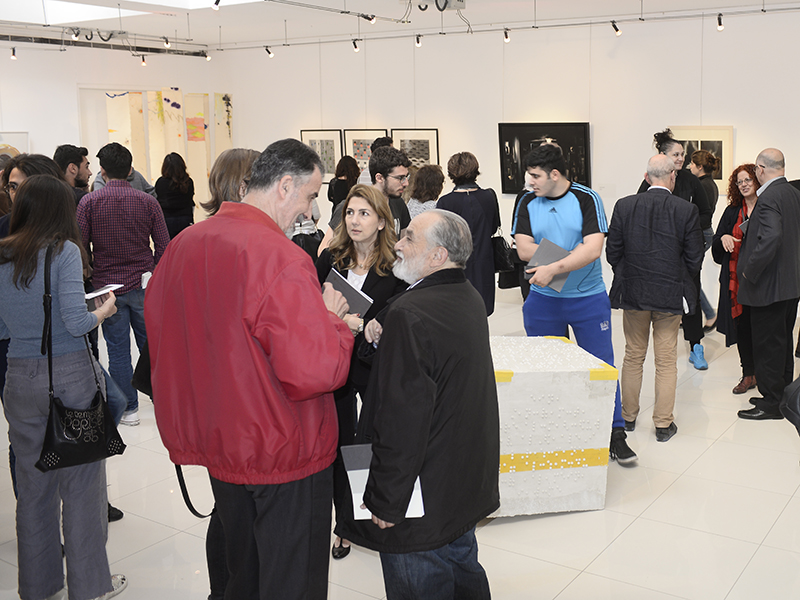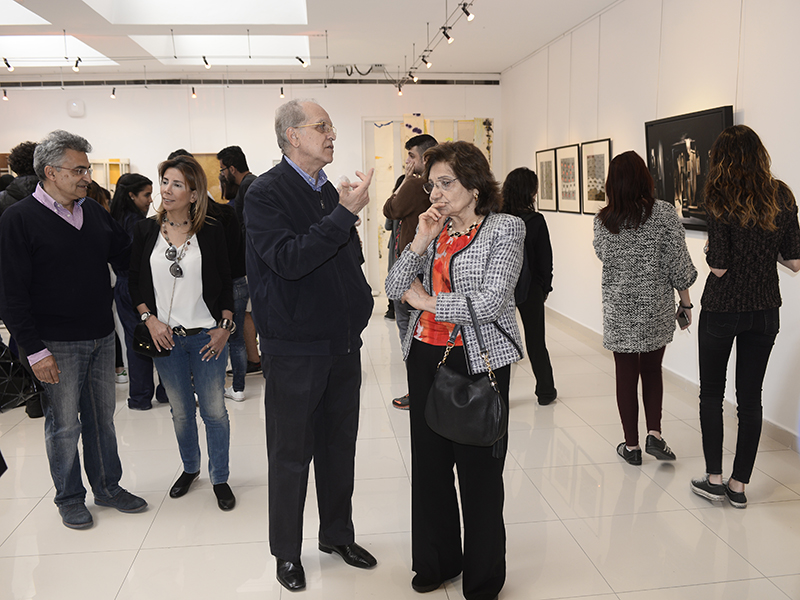In Memoriam
This April the Department of Fine Arts and Foundation Studies hosted the third Triennial Faculty Exhibition at the Sheikh Zayed Gallery on the LAU Beirut Campus. This iteration of the exhibition was a special tribute to Ghassan Ghazal, a teacher of fine arts at LAU since 2006 and respected internationally known artist who passed away suddenly at the beginning of this year.
Silia Abou Arbid, Chair of the Fine Arts and Foundation Studies Department and of the curatorial committee for the exhibition and Dean Elie Haddad opened the exhibition with a welcome and a minute of silence dedicated to Ghazal. “This is a moment of celebration despite fact that we’re also in a moment of remembering a dear colleague who left us at a very young age,” said Haddad, “it’s a real pleasure to see so many students, faculty and outside visitors here.”
Entitled Loquis, the exhibition was curated by Abou Arbid and her colleagues Lee Frederix and Hannibal Srouji who led the layout and hanging of the show, a challenge due to the range of style and themes represented in the group exhibition. Ghazal’s piece was placed off center, a fulcrum surrounded by the work of nineteen of his colleagues. “A lot of these works invite you to reflect on the conditions of life, society, culture. The central piece of course in this exhibition today is the work of Ghassan,” said Haddad.
The piece Ghazal submitted for this exhibition - a model of a large block of battered concrete covered in prayers in Braille - is representative of his artistic approach. “It is to remind us that we are blind, to make the blind seers and the seers blind,” says Joseph Tarrab who authored an homage to Ghazal on “his thought and the recurring, haunting themes underlying it” in the introduction to the exhibition catalogue.
Ghazal, in his own words was, “an artist inspired primarily by the experience of lived history.” His performance pieces and works in diverse media explored the memory embodied in ordinary objects and the “meaning of immigration, war, loss of identity,” according to Tarrab. Dean Haddad also added that “the work is a fitting memorial to the artistic capacity of this person who challenged the norms, who was not out there just to create nice and sellable works but to question the status quo, to question our normative experiences.”
Ghazal’s piece sat off center in the middle of the Sheikh Zayed gallery opposite Samar Mogharbel’s sculpture “Exploration” in ceramic and hay. Moving around the gallery felt like catching glimpses of different worlds all tied together by threads of color and sensation. From the entrance we were welcomed by the immense blue of the sky and sea in Albert Saikaly’s “The Journey” which contrasted satisfyingly with the black and the almost violent of the pieces by Greta Naufal, Rached Bohsali that were echoed in the photograph by Maroun Akiki and still life by Betina Badr. The piece by Amine Hamed and Christine Kettaneh’s haunting miniature sculpture of a bench waiting next to train tracks etched into a leaf carries us through to the yellow, brown and gold of the wood, paint, hundreds of nails point up and circle of black coffee in Lee Frederix, Bassam Geitani and Bassam Lahoud’s pieces. In the far corner stands the tall willowy strips of canvas covered in blotches of paint by Hannibal Srouji that blend seamlessly into the “Weaves” of Zeina Kamareddine Badran that look like strips of sterile bandage, stretched to unfamiliar shapes. The black, white and lines of gold are reflected in the shadows and warm light of Arwa Seifeddine’s painting “Thresholds”. Dark shadow and bright lights dominate the gelatin silver print by Rania Mouawad’s “Soul” and photographs by Abdallah Sfeir and Carlos Ghoussoub as well. The final wall framed by the entrances covered by the riots of muted colors in “Wanderer” by Joanna-Janet Hagopian, “Sad Sea Song” by Mona Jabbour and Amal Saade’s arresting untitled work.
In this way Ghazal’s work was the focal point of a gathering of artists:“his presence is very big in the exhibition,” said Abou Arbid. It was a fitting tribute to an artist who was equally a beloved teacher and esteemed colleague, “He was very loved by his students,”she added, and “would get them to think for themselves.”
Creating an opportunity for students and colleagues to see the work their professors and peers is one of the main aims of this triennial exhibition according to Rached Bohsali who initiated the exhibition series in 2009. “Students in design and art are always curious about those people who teach them…[an exhibition] is a way of connecting with students and with the colleagues around you”. Ultimately, this exhibition gave the faculty and students of LAU an opportunity to connect once again with the work of their fellow artist and honor his memory.
